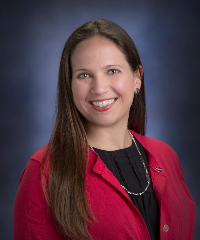Community Blogs
Community Blogs
Discover how the GLOBE community is engaging in all things GLOBE through the community blog posts below.
Learn how to create a GLOBE community blog post.
Filter By:
Blogs List
# 19 August 2019
Prepared by Helen Amos, helen.m.amos@nasa.gov
How to Download Dust Observations Reported through GLOBE
Dust event on 10 July 2019. Photo credit: GLOBE
Citizen scientists from around the world have been reporting dust events using the NASA GLOBE Observer app . You can learn about how to get involved here.
This blog offers step-by-step instructions on how to download GLOBE ...
Read More »
Posted in:
Curriculum:
STEM
SCIENCE AND MATH
TECHNOLOGY
Event Topics:
CAMPAIGNS AND PROJECTS (IOPS, ETC)
GLOBE Science Topics:
EARTH SYSTEM SCIENCE
GENERAL SCIENCE
DATA INCLUDED
BACKYARD SCIENCE
CLIMATE
SCIENTIST SKILLS
GLOBE PROTOCOLS
GLOBE Working Groups:
EDUCATION WORKING GROUP
SCIENCE WORKING GROUP
Investigation Areas:
ATMOSPHERE
EARTH AS A SYSTEM
Learning Activities:
EARTH AS A SYSTEM
ATMOSPHERE AND CLIMATE
News Topics:
TRAINING
COMPETITIONS
Primary Audience:
PARTNERS
SCIENTISTS
ALUMNI
COUNTRY COORDINATORS
TRAINERS
TEACHERS
STUDENTS
Teacher's Guide:
INVESTIGATION AREA DOCUMENTS
SEES Mosquito Mapper intern Lindsay W. in the field, sampling a mosquito larvae habitat site in her study area. Photo credit: Author.
California has recently emerged from a multi-year drought, but I live at the edge of a town in the chaparral where water is typically scarce. I often travel miles by car to find potential mosquito habitats, only to find no larvae in those water sources.
I eventually contacted Vector Control in hopes that they could direct me to potential breeding sites, and they sent me a few locations. As of yet, most sites I’ve visited have had water and no ...
Posted in:
Left: example larva of the genus Toxorhynchites recovered from one of the author's research traps. Right: Larval specimen of prey, Culex quinquefasciatus, for comparison. Toxorhynchites are predator larvae and easily recognized by their unique morphology and larger size. Photo credit: Author.
Toxorhynchites is part of the mosquito family (Culicidae), also known as the “elephant mosquito” and “mosquito eater” and for good reason! These formidable larvae use their mandibles to prey on the larvae of other mosquitoes inhabiting the ...
Posted in:
SEES Mosquito Mapper intern Parker L. in his lab, identifying a specimen recovered from one of his mosquito research traps. Photo credit: Author.
I am fascinated at how effectively Aedes albopictus has expanded beyond its historical geographical origins in Asia, sticking its proboscis into Texas along with every continent across the globe except Antarctica. This invasive mosquito, which serves as a vector for dengue and chikungunya, has been enormously successful in utilizing alternative breeding containers to supplement its natural oviposition sites. In fact, it ...
Posted in:
SEES Mosquito Mapper intern Thien-Nha T. in the field, documenting potential larvae habitat sites. Photo credit: Author.
Before this project, I never ever imagined I would be interested in studying any type of bugs, much less mosquitoes -- my itch-causing nemesis. However, the more I realized how interconnected these bugs are with the rest of the world and even my own life, the more I saw their importance.
My field experiment was designed to figure out what vegetation and color surrounding would attract the most mosquitoes. The structure and goal of the experiment were ...
Posted in:
SEES Mosquito Mapper intern in the field, setting mosquito traps. Photo credit: Clara U.
Something that has fascinated me in the research I have done so far is the vast impact that human activity has on the distribution of mosquito communities. Globalization and human travel are thought to be responsible for introducing many mosquito-borne diseases to unlikely areas, for example, spreading the Culex tarsalis , a vector of western equine encephalitis, to Washington State. Artificial habitats that foster mosquito breeding can develop in abandoned tires, plastic containers, and ...
Posted in:
Do you live in an area that has dust storms? The Global Learning and Observations to Benefit the Environment Program (GLOBE) team would like you to photograph dust events in your area and submit your photos using the GLOBE Observer app .
Join NASA GLOBE Clouds Project Scientist, Marilé Colón Robles, to learn more about how to collect your observations and educational resources you can use with formal and informal audiences. Your observations will be used by scientists to verify satellite observations and see if their models have successfully predicted these ...
Posted in:
Curriculum:
EDUCATION RESEARCH
SCIENCE AND MATH
TECHNOLOGY
Event Topics:
CAMPAIGNS AND PROJECTS (IOPS, ETC)
GLOBE Science Topics:
GENERAL SCIENCE
CLIMATE CHANGE
DATA INCLUDED
BACKYARD SCIENCE
CLIMATE
EARTH AS A SYSTEM
SCIENTIST SKILLS
GLOBE PROTOCOLS
GLOBE Working Groups:
EDUCATION WORKING GROUP
SCIENCE WORKING GROUP
Investigation Areas:
ATMOSPHERE
PEDOSPHERE (SOIL)
Learning Activities:
ATMOSPHERE AND CLIMATE
SOIL
News Topics:
CALENDAR
TRAINING
Primary Audience:
PARTNERS
SCIENTISTS
ALUMNI
COUNTRY COORDINATORS
TRAINERS
TEACHERS
STUDENTS
Teacher's Guide:
GRADE LEVELS
INVESTIGATION AREA DOCUMENTS
Dr. Caio França speaking at the Science Museum Oklahoma.
Oklahoma is an ecologically diverse state in the Southern Plains region of the U.S. It is part of the central flyway for migratory birds, which makes it a sentinel location for West Nile Virus (WNV) surveillance. Why birds? Birds play a role in the WNV transmission cycle. Mosquitoes become infected with WNV when they bite an infected bird. Birds can develop high levels of the virus in their bloodstream. Because WNV is usually non-lethal in birds, birds serve as reservoir hosts. In disease ecology, there are organisms that ...
Posted in:
Do you live in an area that has dust storms? We would like for you to photograph the dust event and submit your photos using the GLOBE Observer app. Have you already been reporting dust storms? We noticed and what to say THANK YOU! Now we want to get the word out that anyone can report dust storms with the app following the steps below.
Watch the recorded webinar on how to submit your observations using the NASA GLOBE Observer app and learn about educational resources you can use in your classroom or in an informal setting ...
Posted in:
Event Topics:
OTHER
GLOBE Science Topics:
EARTH AS A SYSTEM
SCIENTIST SKILLS
GLOBE PROTOCOLS
GENERAL SCIENCE
GENERAL SCIENCE @ES
CLIMATE
GLOBE Working Groups:
TECHNOLOGY WORKING GROUP
SCIENCE WORKING GROUP
EDUCATION WORKING GROUP
News Topics:
REGIONS
CALENDAR
Primary Audience:
TRAINERS
TEACHERS
STUDENTS
PARTNERS
SCIENTISTS
ALUMNI
COUNTRY COORDINATORS
You may have heard the news- there is an exciting challenge this summer for GLOBE Observer users!
The challenge follows in the spirit of early cartographers, Meriwether Lewis and William Clark, and you can win one of two ways. First, use GLOBE Observer to map as much land cover as possible in any GLOBE country by September 2. The top data collectors in each GLOBE region will be recognized. Or, for U.S. users, head to the Lewis and Clark National Historic Trail between Pittsburgh, PA and the Oregon Coast, and take Land Cover and Mosquito ...
Posted in:
Our team has received several questions about what to do when mosquitoes are found in a natural habitat, such as an estuary or a wetland. When you use the Mosquito Habitat Mapper and your mosquito observations are finally logged, you are then prompted to do Step 4, “Eliminating Mosquito Breeding Habitat. By dumping or treating water you can significantly decrease the spread of mosquitoes.”
It’s important to clarify that Step 4 is referring to artificial or natural containers and human created water impoundments. Examples of water impoundments include things such as stock and ...
Posted in:
I am pleased to announce that the Institute for Earth Observation’s at Palmyra Cove’s Innovation Lab is developing a virtual reality experience called Lunar Learning Expeditions that will allow visitors to explore the lunar surface. The first release models the Apollo 11 moon landing site where visitors can perform some of the early experiments as part of the Early Apollo Scientific Experiments Package (EASEP). Within virtual reality, visitors will experience a view from inside a space suit as they perform mission tasks. In-game spectator cameras will allow visitors who are waiting in ...
Posted in:
With the beginning of the mosquito season comes the need for protecting individuals and communities from mosquitoes. When you use the GLOBE Observer Mosquito Habitat Mapper tool, you are not only providing useful surveillance information about when and where mosquitoes are found: you also are providing an important public service known as “source reduction.” Take a look around your home, park and school to see where you can reduce mosquito breeding in your neighborhood:
Remove all unnecessary containers where water can accidentally accumulate. Make sure water in pet bowls ...
Posted in:
Have you wondered how the GLOBE Clouds team at NASA Langley matches your cloud observations to satellite data? A new release titled " NASA GLOBE Clouds: Documentation on How Satellite Data is Collocated to Ground Cloud Observations " is now available from our satellite comparison page.
This document is written by the GLOBE Clouds team with support by various NASA scientists involved in the program or involved in the multitude satellites collocated or matched to your cloud observations.
Where to find the documentation?
Visit our NASA GLOBE Cloud ...
Posted in:
Check out NASA Langley's newly released story about the recent GLOBE North American Regional Meeting, hosted at NASA Langley, that included a day of training in clouds and aerosols.
https://www.nasa.gov/feature/langley/cirrius-ly-cool-science-at-nasa-langley
GLOBE Participants practice using sun photometers at the GLOBE NARM at NASA Langley. Credits: NASA.
Posted in:
Curriculum:
SCIENCE AND MATH
Event Topics:
MEETINGS
WORKSHOPS
GLOBE Science Topics:
EARTH AS A SYSTEM
News Topics:
MEETINGS
TRAINING
Primary Audience:
TRAINERS
PARTNERS
ALUMNI
COUNTRY COORDINATORS
Grupo de profesores, organizadores, trainers y ayudantes del Taller de GLOBE en el Lago Lácar, San Martín de los Andes, Argentina
English version: end of the blog
Del 14 al 16 de febrero de 2019 se desarrolló el Taller del Programa GLOBE en la ciudad de San Martín de los Andes, Argentina. Este taller había sido solicitado por algunos docentes que ya conocían algunas actividades pero también se sumaron más profesores.
Gracias a la colaboración de muchas personas fue posible realizarlo. Los Supervisores de Media y Técnica de la Zona Sur de la Provincia de Neuquén: ...
Posted in:
Curriculum:
STEM
EDUCATION RESEARCH
SCIENCE AND MATH
TECHNOLOGY
Event Topics:
WORKSHOPS
Investigation Areas:
EARTH AS A SYSTEM
HYDROSPHERE
PEDOSPHERE (SOIL)
ATMOSPHERE
BIOSPHERE
Primary Audience:
TEACHERS
Have app, will travel! I am reporting from the field, the campus of the University of Hawaii, Manoa (UHM). I am meeting with citizen scientists here who are collecting data using the GLOBE Observer app. I had the good fortune to meet Dr. Floyd Reed, a professor in the Department of Biology. His lab is involved in modifying strains of Culex mosquitoes so that they are unable to transmit avian (bird) malaria, a disease responsible for the ongoing extinction of many of Hawai’i’s native bird species.
Dr. Reed agreed to go out and collect mosquitoes with us this morning, using the GLOBE ...
Posted in:
If you have used the GLOBE Observer Mosquito Habitat Mapper, you know that the app allows you to identify your larva and apply its scientific name. You may have wondered why we use these names? For instance, Aedes aegypti’s common name is the “Yellow Fever Mosquito”. Why don’t we just use the common name when we talk about our work in this project?
A unique name, used across many different languages
There are many reasons why scientists use scientific names instead of common names. In the GLOBE Mission Mosquito Campaign, where people all over the world are identifying and ...
Posted in:
Data Data Everywhere! #1: How to get the 'T' out!
You may have noticed that the time format when you retrieve data from the GLOBE web site recently changed. The new format is YYYY-MM-DD T HH:MM:SS.
We would like to show a quick and easy way to go back to the time format MM/DD/YYYY HH:MM:SS.
1) Select the column that has the time format you want to change.
2) Copy the column to a new location on your spreadsheet; you do not want to manipulate the original column directly, to avoid losing data.
3) Make sure there is a blank column ...
Posted in:
Investigation Areas:
AEROSOLS
GLOBE Students!
The GLOBE Clouds team is hoping you are all collecting observations or downloading and analyzing clouds data for the upcoming U.S. Student Research Symposia or the International Virtual Science Symposium . If you are using data downloaded from the GLOBE site, you will see a T between the date and time of the observations (example - 2018-10-01 T 14:00:00).
We got together with Dr. Helen Amos, who put together steps on how to take the "T" out using Excel and Google sheets . The result is having a date and time that looks ...
Posted in:
Event Topics:
CAMPAIGNS AND PROJECTS (IOPS, ETC)
COMPETITIONS
SCIENCE SYMPOSIA AND FAIRS
GLOBE Science Topics:
SCIENTIST SKILLS
MEETINGS/CONFERENCES
GLOBE PROTOCOLS
Investigation Areas:
ATMOSPHERE
Learning Activities:
ATMOSPHERE AND CLIMATE
News Topics:
VIRTUAL SCIENCE FAIR
REGIONS
Student Research Reports:
U.S. STUDENT RESEARCH SYMPOSIA (SRS)
INTERNATIONAL VIRTUAL SCIENCE SYMPOSIUM REPORT
STANDARD RESEARCH REPORT
—
20 Items per Page










